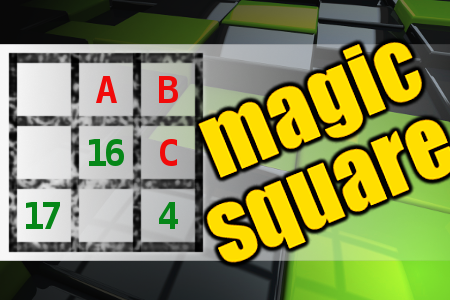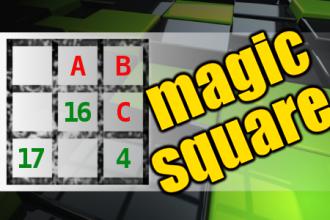MAGIC SQUARE: Calculate A+B*C
The aim is to place the some numbers from the list (1, 2, 4, 5, 9, 12, 16, 17, 24, 41, 88) into the empty squares and squares marked with A, B an C. Sum of each row and column should be equal. All the numbers of the magic square must be different. Find values for A, B, and C. Solution is A+B*C.Correct answers: 38
The first user who solved this task is Anas Diab.
#brainteasers #math #magicsquare

Five Englishmen in an Audi Quattro rol...
Five Englishmen in an Audi Quattro roll up to an Irish border checkpoint. Paddy, the officer, halts them and sternly declares, "It's illegal to cram five people into a Quattro. 'Quattro' means four."
The Englishman, incredulous, retorts, "Quattro is just the name of the car! Check the papers: it's designed for five."
"You can't pull that one on me," replies Paddy. "Quattro means four. You've got five folks in there; it's against the law."
The Englishman, now irate, demands, "Get your supervisor! I need someone with more intelligence!"
Paddy quips back, "Sorry, Murphy's tied up with two blokes in a Fiat Uno.
The Englishman, incredulous, retorts, "Quattro is just the name of the car! Check the papers: it's designed for five."
"You can't pull that one on me," replies Paddy. "Quattro means four. You've got five folks in there; it's against the law."
The Englishman, now irate, demands, "Get your supervisor! I need someone with more intelligence!"
Paddy quips back, "Sorry, Murphy's tied up with two blokes in a Fiat Uno.

